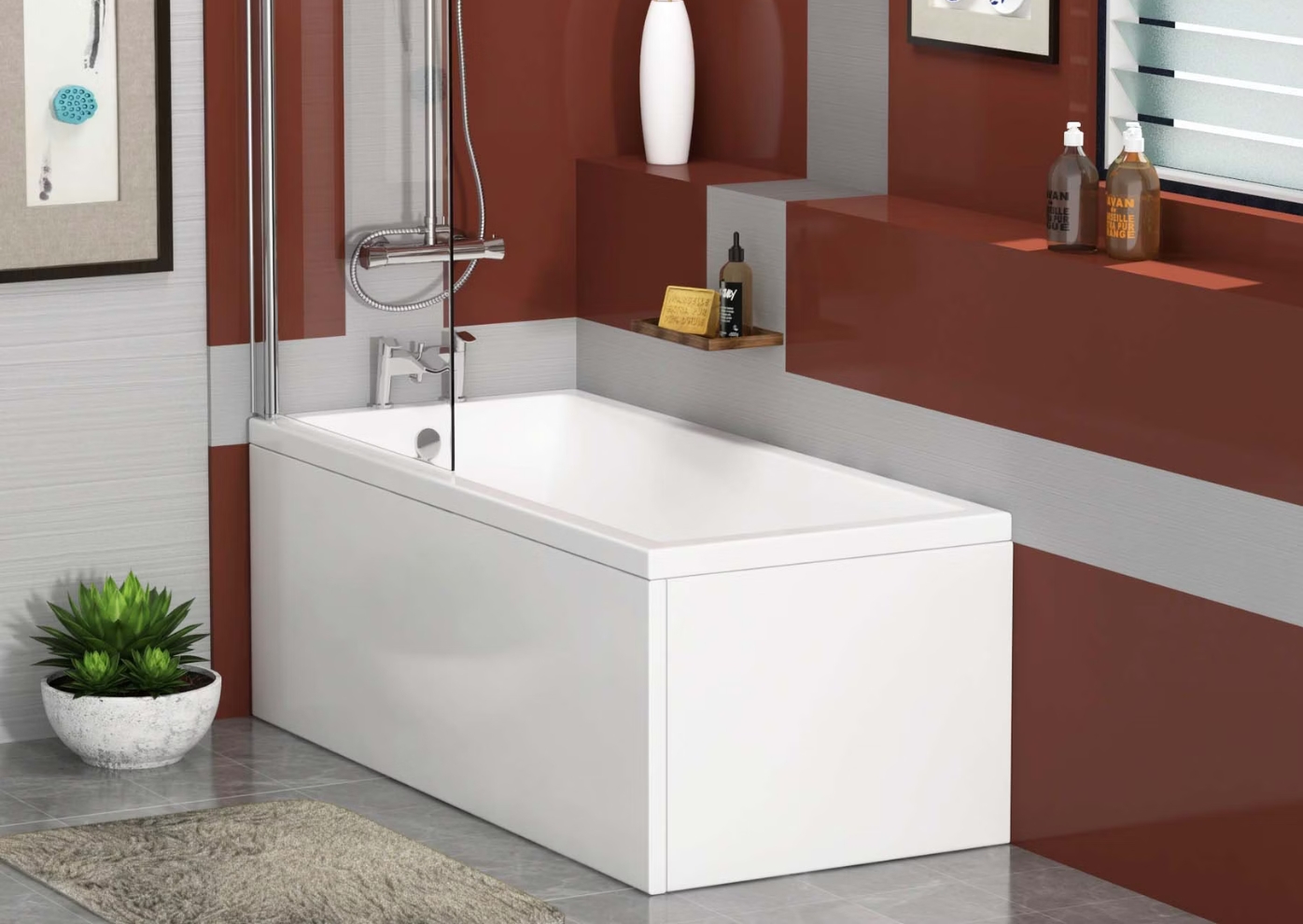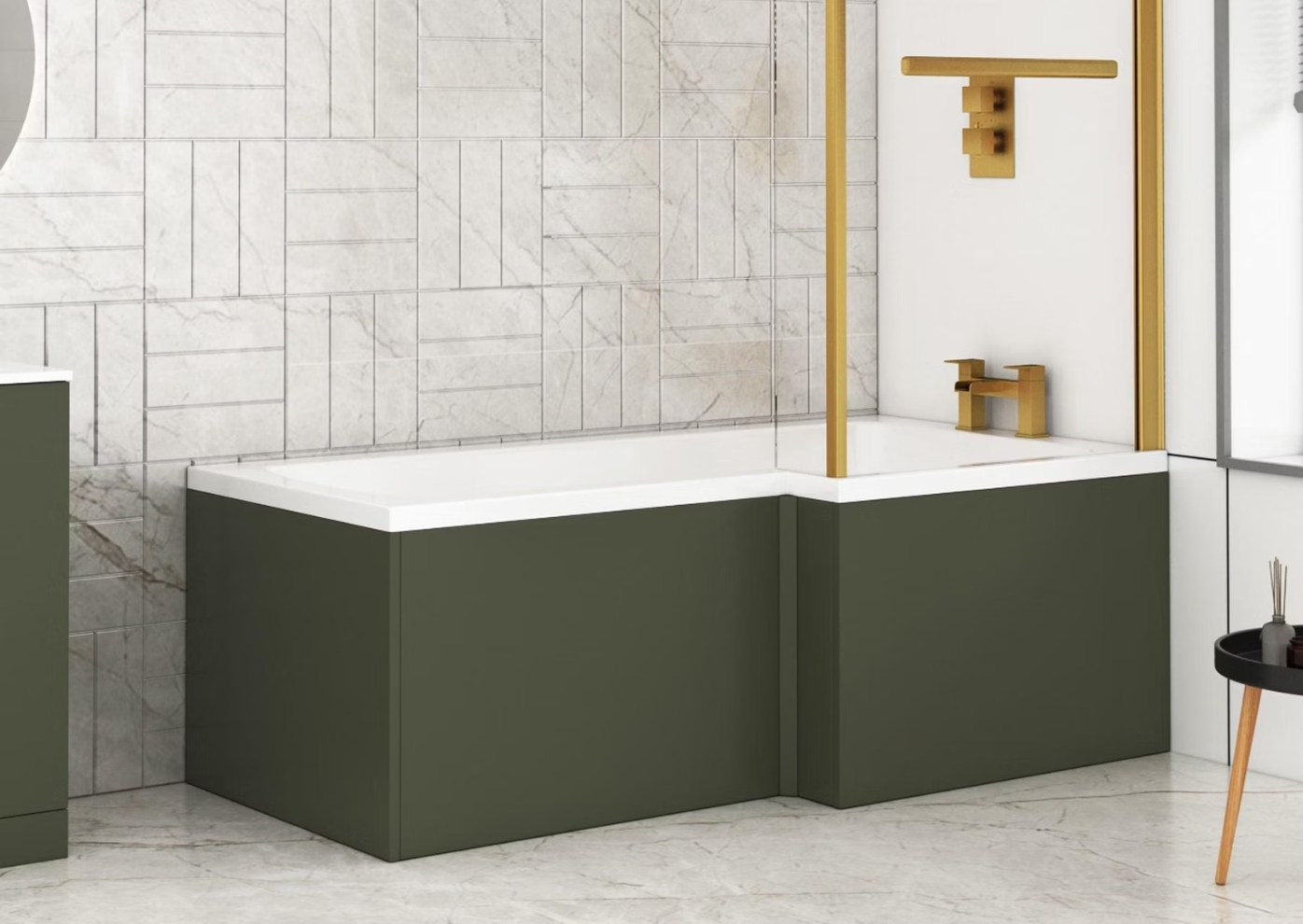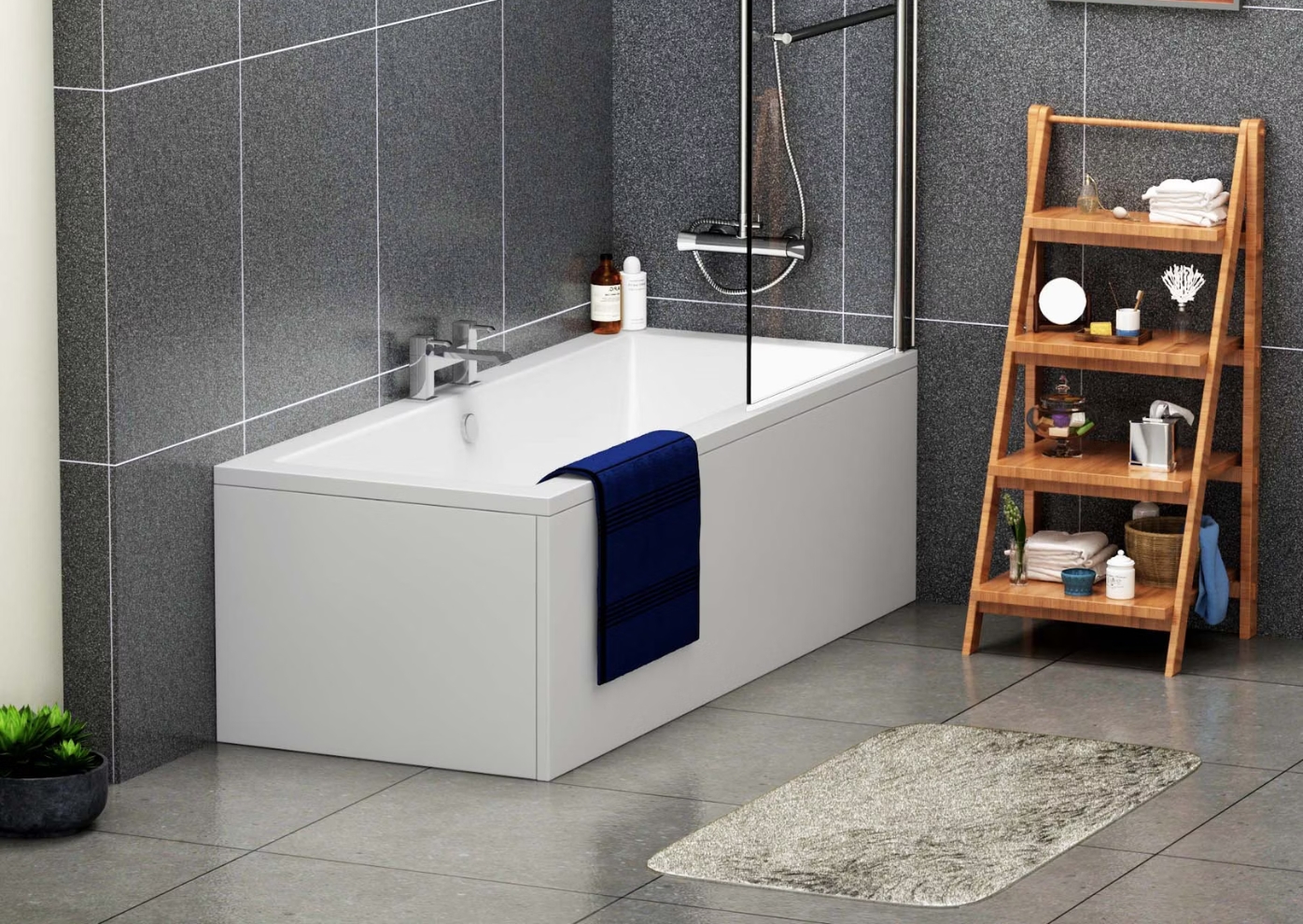
Are you planning to update your existing bathtub?
There’s nothing quite like a bath to unwind at the end of a long, hard day away from home. Over time, bathtubs have transitioned from a luxury to a necessity.
And this variable set of needs is what makes the bathtub selection somewhat complex (if you’re buying a tub for the first time)
You’ll find a plethora of bathtub options when shopping for a new one!
Modern bathtubs are loaded with all the features you might desire for style, comfort, and convenience. However, given the diverse range of bathtubs available on the market, selecting the one that’s right for you will need careful consideration.
From size to shape and material considerations, let's discuss how you can find the perfect bathtub for your bathroom.
Famous Bathtub Types You Should Know
It’s always a good idea to do some homework before you go on a shopping spree buying a new bathtub for your space. Bathtubs come in various shapes and sizes including both freestanding and the one that fits along two or three walls.
Here we have discussed a few common types of baths available in the UK.
Standard Baths


Standard baths are the most popular design among homeowners. These baths are available in a variety of shapes, although they typically feature a standardised exterior coupled with variations in the interior for enhanced comfort and adaptability.
Crafted from durable acrylic material, they ensure both comfort and longevity. Opting for a standard bath can infuse your bathroom with a touch of contemporary flair or classical elegance, depending on your personal style and the bath's design.
Standard baths are predominantly available in single and double ended designs. Let’s understand how each type can offer value to your bathroom space, below:
Single Ended Baths
- Single ended baths are a classic choice of UK-based homeowners, known for their practicality and versatility.
- These baths feature taps fitted at one end, with the opposite end designed with a gentle slope to provide comfortable support for lying back.
- Suitable for solo bathing, where the bather typically sits at the non-tap end.
- Single ended baths are available in both square and round shapes and offer a variety of design options to fit any bathroom aesthetic.
- Made from durable acrylic material with a standard thickness of 6mm, these baths combine the comfort of keeping with long-lasting use.
Double Ended Baths


- Another popular choice amongst UK-based homeowners, the double ended baths have a symmetrical design with a spacious interior.
- Unlike single ended baths, these baths feature taps fitted in the middle to allow users to lean back on either end.
- Available in square and round interior shapes, double ended bathtubs are suitable for a wide range of aesthetic preferences.
- Whether you have a contemporary or classic bathroom look, these can be a versatile choice in all types of settings.
- Just like their single-ended counterparts, they are also made from lucite acrylic material with a 6mm thickness ensuring both comfort and durability.
Shower Baths
Popular amongst the homeowners in the UK region, let’s talk about shower baths!
If you're working with limited space and budget, preventing the installation of separate shower enclosures and baths, consider the practicality of shower baths. A shower bath, merging the utility of shower enclosures and baths, presents a two-in-one solution, particularly suitable for a family bathroom.
The shower baths are typically available in straight, P, and L shapes, each catering to different spatial and aesthetic requirements. Below, we’ve discussed each shower bath shape to offer you more clarity when making the final buying decision:
P-Shaped Shower Bathtubs


- These baths have a distinctive P shape where one end is wider and more rounded.
- Usually fitted with a curved bath screen, the P-Shaped shower baths resemble the standalone shower enclosure design.
- This attractive design with sleek lines not only adds functional showering space but also a touch of modern elegance to the bathroom.
- The optional shower screens are usually available in folding, pivot, or fixed types.
L-Shaped Shower Bathtubs


- Designed in sharp angular pattern, L-Shaped baths offer a modern and streamlined look, perfect for contemporary bathrooms.
- Install a shower screen at the one end to have a perfect shower experience while the other side can be used for a relaxing bath.
- Not only these are highly functional designs that are perfect for small and family bathrooms but offer space saving due to their sleek shape.
- They also come equipped with a glass panel that partially encloses the shower area, maintaining a tidy appearance.
Straight Shower Baths


- Identical to standard bathtubs, the straight shower baths are also a preferred choice of homeowners in the UK region.
- These versatile units are supplied with a shower screen to prevent water splashes and are suitable for any bathroom configuration.
- This shower bathtub is particularly advantageous for bathrooms where space is at a premium, allowing the luxury of both a bath and shower in one.
- Crafted from durable acrylic, the straight shower baths are built to last, with a standard thickness of 6mm, ensuring quality and durability.
How to Select the Right Bathtub?
Since you’re familiar with various bathtub options, let’s move towards the more important part of the discussion, how to select one. We’ve jotted down all the necessary steps for narrowing down the perfect bathtub for your bathroom space, below.
Follow these steps and buy the right bathtub that will result in improved bathing experience:
- Start your bathtub selection process by evaluating your bathroom type. Are you looking for a bathtub for an ensuite or a family bathroom? Usually, a standard bathtub would be an easy choice if you’ve a standard bathroom. And you may want to opt for a 2-in-1 shower bath in case you own a family bathroom. Remember, your bathroom type will dictate your bathtub selection, so figure this out before moving on to the next step.
- The next step that you need to take is to evaluate the bathtub's location. Should it be placed in the corner or against the wall? Or if you want it to be placed in the middle of the space? These are a few questions that will decide what bathtub the perfect option for your bathroom space will be. If you own a compact space, go for a combined shower and bath. Contrary to a compact area, you may place the bathtub in the centre to add some glamour if space is not the main concern for you.
- In the third step, for selecting a bathtub for your bathroom, you’ll need to measure the space before you decide on an option. Taking measurements will help you later when narrowing down your research. You’ll know if a bathtub goes with the available space or not before you place an order.
- Fourthly, you need to set a budget for buying a new bathtub! Setting a budget limit shall also help you in locating a bathtub that doesn’t empty your pocket, fulfils its purpose, and adds charm to your space, too. Also, knowing your buying capacity shall be a great help when you need certain features in your new bathtub purchase.
- You’ve assessed your bathroom type, bathtub’s installation place, and your budget, and now the only step left is to pick a size and shape. Choose whether you need a small, deep, or a large bath to remodel your bathroom space. Whatever you choose, make sure it goes with your grand bathroom renovation plan and stays within your initial budget.
Frequently Asked Questions (FAQs)
Q1. What's the Standard Bathtub Size?
Standard bathtub dimensions in the UK are 1700mm in length and 700mm in width (approximately 5 feet, 7 inches by 2 feet 3 inches). If you have a small bathroom then you should consider 1400mm or a 1500mm bathtub. For larger bathroom sizes, consider buying 1800mm or above bathtub sizes.
Q2. What's the Difference Between Acrylic and Cast-iron Bathtubs?
The acrylic or lucite acrylic is a popular bathtub material in the UK. It is lightweight, economical, resistant to scratches, and easy to install. However, it is comparatively less durable than cast iron bathtubs.
On the other hand, cast iron bathtubs are highly durable and excellent at retaining heat. But it is heavier, harder to install, and most importantly much more expensive than acrylic baths.
Q3. How Much Space is Needed to Install a Bathtub?
The space needed for installing a bathtub depends on its size!
If you are planning for a standard 1700mm x 700mm bath, then you should leave a little extra space for clearance and movement.
Q4. Should I Buy a Single-Ended or a Double-Ended Bathtub?
Both single-ended and double-ended baths are an excellent choice for a bathroom!
If you're seeking a classic practical bathtub, go for single-ended bathtubs that are suitable for solo bathing.
If you want a space-saving design with reclining at one end, opt for a double-ended bath.
Q5. What Bathtub Would Be Perfect for My Small Bathroom?
For a small bathroom, you should consider a compact or corner bathtub!
You can choose 1400mm or a 1500mm bath in length for such spaces. A standard single-ended bath also has sleek dimensions that are suitable for small spaces.
Conclusion
A bathtub can be the difference between merely functional space and a highly relaxing and rejuvenating bathroom!
Therefore, it is crucial to choose a bathtub type based on your bathroom layout, personal preference, and aesthetic requirements. From single ended, and double ended to P and L shaped shower baths there are a variety of options available in the market. Each of these bath types have their pros and cons.
You should evaluate each type depending on the various considerations discussed in this blog. Only then you can ensure that you end up buying a perfect bathtub for your bathroom.
Looking for a new bathtub?
Royal Bathrooms is a trusted place to buy a new bathtub for your bathroom space and give it a refreshing touch.
